Website speed is pivotal in user experience, SEO rankings, and overall conversion rates. For eCommerce websites, where customers expect fast, seamless browsing and quick checkouts, optimizing website speed isn’t just a good practice—it’s a necessity. In this article, we’ll explore the importance of website speed optimization, the tools and strategies to achieve it, and best practices for e-commerce websites in 2025.
Why Website Speed Matters
1. User Experience and Conversion Rates
A fast-loading website is crucial for user satisfaction and improved conversion rates. Research indicates that a delay of just one second can lead to a 7% decrease in conversions. If your eCommerce site takes 3 seconds to load instead of 2, you could lose a significant portion of your potential customers. Every millisecond counts when it comes to online sales.
Users who visit your site expect instant access to products, promotions, and information. Slow load times disrupt the user experience, leading to frustration and abandonment. For eCommerce websites, this translates directly into lost revenue. The faster the site, the more likely visitors will stay longer, browse more products, and complete purchases.
2. Bounce Rates
Bounce rate refers to the percentage of users who land on a website and leave without interacting with any other page. Slow-loading websites experience high bounce rates, and a website that takes more than 3 seconds to load will likely experience a 40% bounce rate. Nearly half of your potential customers will leave before seeing your products or services.
A fast site can keep users engaged, leading them to explore more and, ultimately, make a purchase. For eCommerce businesses, reducing bounce rates is a crucial metric impacting revenue and customer lifetime value (CLV).
3. SEO Impact
In today’s competitive digital marketplace, website speed is a significant factor for SEO. Google uses speed as one of the ranking factors for search engine results, which means faster websites are more likely to rank higher. A quicker website is a better user experience, which aligns with Google’s mission to provide the best content to users quickly. Websites that provide fast, high-quality experiences are rewarded with better rankings, higher traffic, and more conversions.
Google’s Core Web Vitals metrics focus on user experience, particularly page load times, interactivity, and visual stability. Websites that meet Core Web Vitals standards typically see better SEO rankings. Therefore, if you want to compete with other eCommerce sites, you must prioritize website speed optimization.
Statistics on Website Speed and Business Impact
Website speed is more than just a technical aspect—it directly impacts business performance. Here are a few statistics that underscore the importance of optimizing your website’s load time:
Conversion Rate Increase: A 1-second improvement in load time can increase conversion rates by 2%.
Customer Retention: Fast-loading sites report 60% higher customer retention. Users are more likely to return to a site that loads quickly and provides a smooth experience.
Revenue Impact: On average, eCommerce sites that optimize page speed see a 20% increase in revenue.
Mobile Impact: For mobile eCommerce sites, every 100-millisecond delay in load time reduces revenue by 12%. With mobile shopping dominating eCommerce, the impact of slow load times on mobile is significant.
As you can see, website speed doesn’t just affect user satisfaction; it’s deeply tied to conversion rates, revenue, and long-term customer loyalty.

Tools for Website Speed Optimization
Several tools are available to help businesses assess and optimize website speed. These tools can analyze your website’s performance, highlight bottlenecks, and recommend fixes. If you want to work with an agency that can help you navigate these tools effectively, platforms like DesignRush list top eCommerce agencies for analytics and optimization. Below, we explore some of the most popular and effective speed optimization tools:
1. GTmetrix
GTmetrix is a free tool that offers comprehensive reports on your website’s performance. It combines data from Google PageSpeed Insights and Web Vitals to give you a detailed breakdown of your site’s load time and overall performance. GTmetrix provides valuable insights and actionable image compression, caching, and minification recommendations. It also offers a detailed waterfall chart to help pinpoint what’s slowing down your site.
Key Features:
- Detailed performance reports.
- Recommendations for image optimization, minification, caching, etc.
- Waterfall chart for deep insights into each element on your page.
2. Pingdom
Pingdom is a simple yet powerful website speed test tool. It provides detailed insights into your website’s performance, offering both free and paid versions. Pingdom provides a global perspective by testing your website from multiple server locations worldwide, helping you understand how your website performs internationally. It’s beneficial for sites with international visitors.
Key Features:
- Global server locations for testing.
- Performance grade and insights on site speed.
- Detailed breakdown of HTTP requests and responses.
3. NitroPack
NitroPack is an all-in-one speed optimization solution that automates various optimization tasks. It handles caching, minification, image optimization, lazy loading, and more, providing a streamlined way to speed up your site. NitroPack is ideal for users who want a comprehensive solution without manually managing individual optimization tasks.
Key Features:
- Automatic image compression and optimization.
- Built-in caching and minification.
- Easy-to-use interface with minimal configuration required.
4. WP Rocket & Perfmatters
If you’re running a WordPress site, WP Rocket, and Perfmatters are two highly effective plugins for improving website performance. Both plugins focus on caching, code optimization, and lazy loading to speed up your website. WP Rocket offers extensive caching capabilities, while Perfmatters helps reduce HTTP requests and minimize unnecessary scripts.
Key Features (WP Rocket):
- Advanced caching.
- Image lazy loading.
- Minification of CSS, HTML, and JavaScript files.
Key Features (Perfmatters):
- Disable unnecessary WordPress features that slow down your site.
- Reduce HTTP requests by combining files.
- Focus on critical performance optimizations.
Website Speed Optimization Strategies for eCommerce Websites
Implementing a combination of technical strategies to improve your eCommerce website’s speed is crucial. These strategies help improve load times and contribute to a better overall user experience.
1. Caching
Caching is one of the most effective ways to speed up your website. Server-level caching stores static resources on the server, so they don’t need to be reloaded whenever a user visits your site. Similarly, browser caching saves files in the user’s browser, allowing for faster loading on subsequent visits.
Types of Caching:
- Page Caching: Stores the entire page content for quicker load times.
- Object Caching: Stores dynamic objects, such as database queries.
- Browser Caching: Saves resources like images, JavaScript, and CSS files in the user’s browser.
2. Image Optimization
Images can be the most extensive files on a website and significantly impact load times. Compressing images without losing quality is essential for maintaining website speed. Use image compression tools like TinyPNG, Smush, or ImageOptim to reduce the file size of your images without compromising on quality.
Best Practices for Image Optimization:
- Use WebP format for faster loading times.
- Implement lazy loading for images to load them only when the user scrolls to them.
- Compress images before uploading to your site.
3. Minify and Compress Code
Minifying CSS, JavaScript, and HTML files reduces their size, which can significantly improve loading times. Tools like UglifyJS and CSSNano can minify JavaScript and CSS files. You should also enable Gzip compression on your server to compress files before sending them to users’ browsers.
4. Content Delivery Networks (CDNs)
A Content Delivery Network (CDN) is a worldwide network that serves content to users from the closest server. CDNs help reduce latency and speed up page loading by minimizing the distance between users and your server.
Popular CDNs include:
- Cloudflare
- Amazon CloudFront
- KeyCDN
5. Lazy Loading
Lazy loading delays loading non-essential content, such as images and videos, until the user scrolls down the page. This reduces the initial load time, improving website performance. For eCommerce sites, lazy loading is beneficial for product images or reviews.
6. Reduce HTTP Requests
Each time users visit your site, their browser sends HTTP requests for files like images, CSS, and JavaScript. Reducing the number of HTTP requests by minimizing plugins and combining CSS/JavaScript files can help improve loading times.
Best Practices for eCommerce Website Speed Optimization
Speed optimization is not a one-time task for eCommerce websites—it’s an ongoing process. To ensure your site consistently delivers a fast, smooth experience, here are some best practices:
1. Optimize for Mobile
With most online shopping now happening on mobile devices, ensuring your website is optimized for mobile is essential. A mobile-friendly design that loads quickly can significantly impact user experience and conversion rates.
Mobile Optimization Tips:
- Use responsive design to ensure your site adapts to different screen sizes.
- Optimize images for mobile by reducing file sizes and using mobile-friendly formats.
- Test your mobile site regularly to ensure it loads quickly and functions smoothly.
2. Focus on Core Web Vitals
Google’s Core Web Vitals are metrics that directly impact user experience. These include:
- Largest Contentful Paint (LCP): Measures the loading speed of the page’s most significant visible content element.
- First Input Delay (FID): Measures the time it takes for the user to interact with your site.
- Cumulative Layout Shift (CLS): Measures the visual stability of the page as it loads.
3. Regular Audits and Continuous Optimization
Speed optimization is an ongoing process. Regularly audit your website to identify new performance bottlenecks and areas for improvement. Tools like GTmetrix, Pingdom, and Google PageSpeed Insights can help you monitor site performance and keep your website running smoothly.
In addition to speed, maintaining robust website security is essential for protecting customer data and ensuring uninterrupted shopping experiences. Learn more about ecommerce website security to keep your store safe and trustworthy.
Conclusion
Website speed optimization is crucial for the success of eCommerce businesses. A fast website enhances user experience, reduces bounce rates, improves conversion rates, and boosts SEO rankings. Using the right tools and strategies ensures that your eCommerce website performs at its best and keeps your customers happy.
To optimize your website for speed and increase conversions, contact a professional eCommerce web design agency in the USA today. With expert help, you can ensure your site is fast, efficient, and ready to deliver exceptional user experiences that drive sales.
Contact us today to optimize your website’s speed and unlock your eCommerce website’s full potential!



